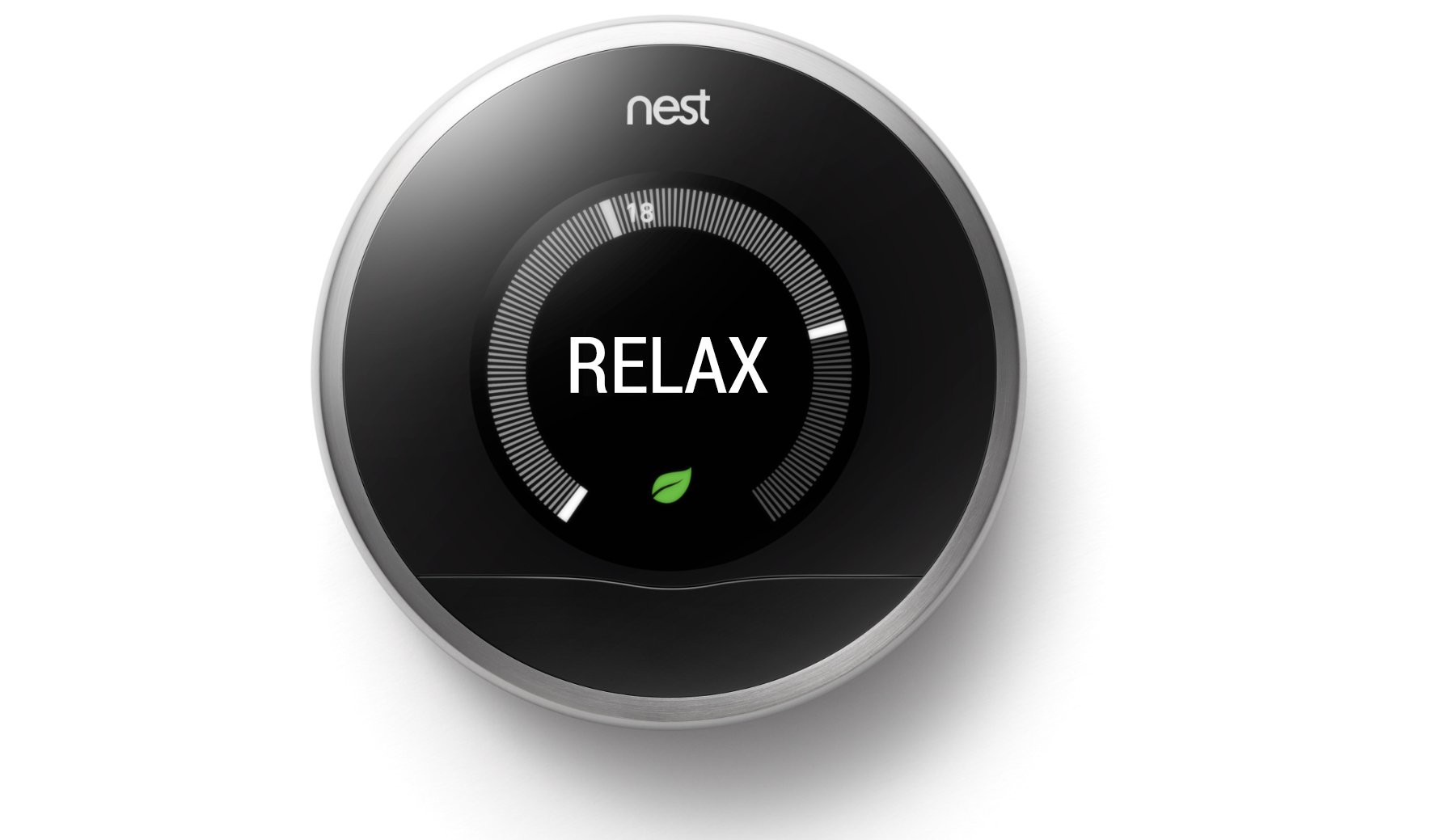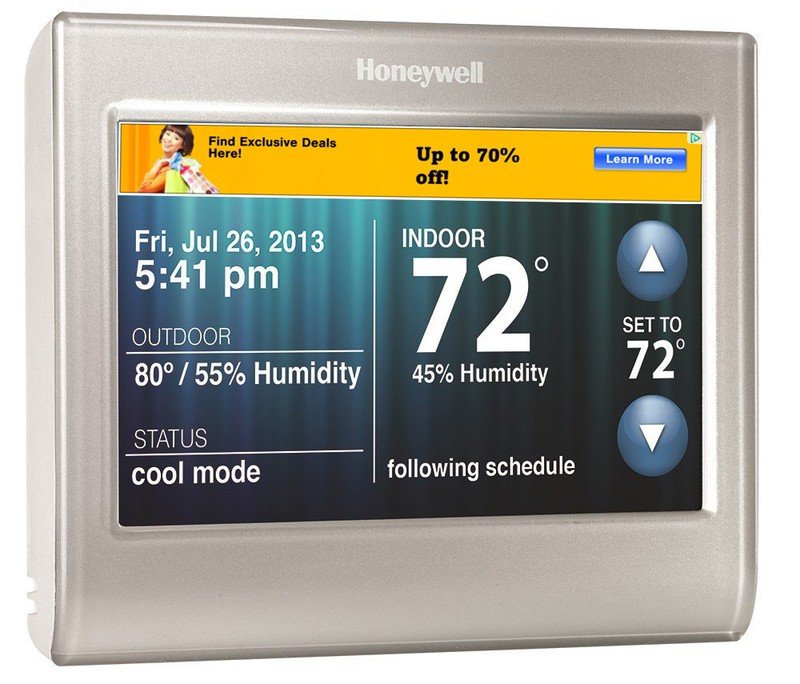On Google, advertising, and invading your home appliances

In answering federal regulators' questions last year, Google merely stated the obvious — 'mobile' doesn't fit the new categories of device of the future
Can't say I didn't see this coming.
Late last year, the Securities and Exchange Commission — one of the bodies that helps make sure businesses play fair — had some questions for Google regarding its year-end 2012 fiscal report, which was filed in January 2013. Some of those questions regarded Google's purchase of Motorola Mobility. Some had to do with taxes. Some with Motorola's Home business. Other questions had to do with the difference between the "cost per click" for advertising on desktop versus mobile.
It's Google's answers to that last section that got the headlines, of course. It's blogger gold. "ZOMG Google to put ads on thermostats and refrigerators and your newborn baby's forehead."
Only, that's not really what Google said.
I think we gave you the basic facts in our story, assuming folks would click through and read the SEC notes for themselves. But we know better. So let's take a look point by point.
Here's the question the SEC asked Google (emphasis mine):
- Your response to prior comment 1 suggests that platform price differentials remain between desktop and mobile. We also note that advertisers are diverting their advertising campaigns from desktop to mobile and tablets. Please quantify the impact of the various factors identified in your discussion of changes in revenue that caused the six percent decline in average-cost-per click paid by advertisers. If the decline is primarily attributable to mobile advertising, explain why quantification of mobile activity would not be meaningful. Further, tell us whether the increase in the number of paid clicks was the same across each platform. Tell us whether the number of paid clicks for desktops and tablets increased at the same rate as the mobile platform. Tell us what consideration you gave to providing the percentage change by platform.
The blurred line between tablets and phones
Be an expert in 5 minutes
Get the latest news from Android Central, your trusted companion in the world of Android
Basically, the SEC wants to know why there's such a difference in CPC (that's cost per click, remember) between desktop and mobile. Google's response started with why its year-end numbers were what they were. But the juicy part for everyone comes toward the middle, when Google starts talking about how it's actually getting tougher to say exactly what a "mobile" platform is. Google started with:
We would also like to highlight the significant difficulties we see with the practice of breaking out CPCs and paid clicks — or any performance metric — by device platform. It is increasingly challenging to define what exactly a "mobile" platform is from period to period — and what it will be going forward.
That is to say that simply having two categories — desktop and mobile — doesn't take into account future categories of devices, nor does it accurately reflect how we use our current devices today. Simple enough.
Google went on to explain that "most industry observers would have included tablets (in addition to handsets) in their definition of mobile." I'm inclined to agree — we pretty much do that here as well. And Google notes that it'd been treating phones and tablets as members of the same category for a while as well, including in third-quarter revenue numbers for 2011 and 2012.
But we don't use tablets like we do phones, right?
However, as tablets gained momentum in the market, it became clear to us that their usage had much more in common with desktops than with handsets.
As more people starting buying tablets, Google noticed that they were being used more like desktop (or laptop) computers than phones. And that makes sense. You probably don't keep a tablet in your pocket. You're not pulling it out every 2 minutes to take a peek. It's more of an appliance that you use for a little bit, and then leave it be.
'Mobile' isn't a future-proof category

This probably isn't what Honeywell has in mind. Or google, for that matter.
Now for the juicy part. Again, emphasis mine:
We expect the definition of "mobile" to continue to evolve as more and more "smart" devices gain traction in the market. For example, a few years from now, we and other companies could be serving ads and other content on refrigerators, car dashboards, thermostats, glasses, and watches, to name just a few possibilities.
ZOMG MOAR ADS IN MOAR PLACES!!!
Folks, that's just Google stating the obvious. As more and more devices become "smart," with touchscreens and connectivity and the ability to reach more people, companies might want to monetize them in some way. That's all. Google's listing possible platforms for ad delivery.
Our expectation is that users will be using our services and viewing our ads on an increasingly wide diversity of devices in the future, and thus our advertising systems are becoming increasingly device-agnostic. Enhanced Campaigns was specifically designed to help advertisers become more efficient in a multi-device future; rather than writing unique desktop campaigns, handset campaigns, and tablet campaigns, etc., Enhanced Campaigns allows our advertisers to write one ad campaign, which we serve dynamically to the right user at the right time on whatever device makes the most sense. Because users will increasingly view ads and make purchase decisions on and across multiple devices, our view of revenue is similarly device-agnostic.
Google didn't say 'Nest' — bloggers did
Google did not say it'll put ads on a Nest thermostat. I get why we used a picture of Nest in our original story. But c'mon, folks. Google didn't even purchase Nest until after it submitted these answers to the SEC. (Update: Engadget got a quote from Google pretty much saying exactly this.)
Google also didn't say it's going to do any of this stuff tomorrow. Google's just saying what any other company in its place would say. There are these potential avenues for advertising. Maybe we'll use 'em. Maybe we won't. But here's what they are, and they're not all what we'd consider to be "mobile."
And so this "Enhanced Campaigns" system lets advertisers create a single ad campaign across phones, tablets and, eventually, other platforms. That's all. No interstitials between changing temperature settings. No pop-ups asking you to take a poll before turning on the heat.
Just common sense when answering the questions of a regulating body. Again, you can read the full answers here. It's a lot easier than picking up a pitchfork.

